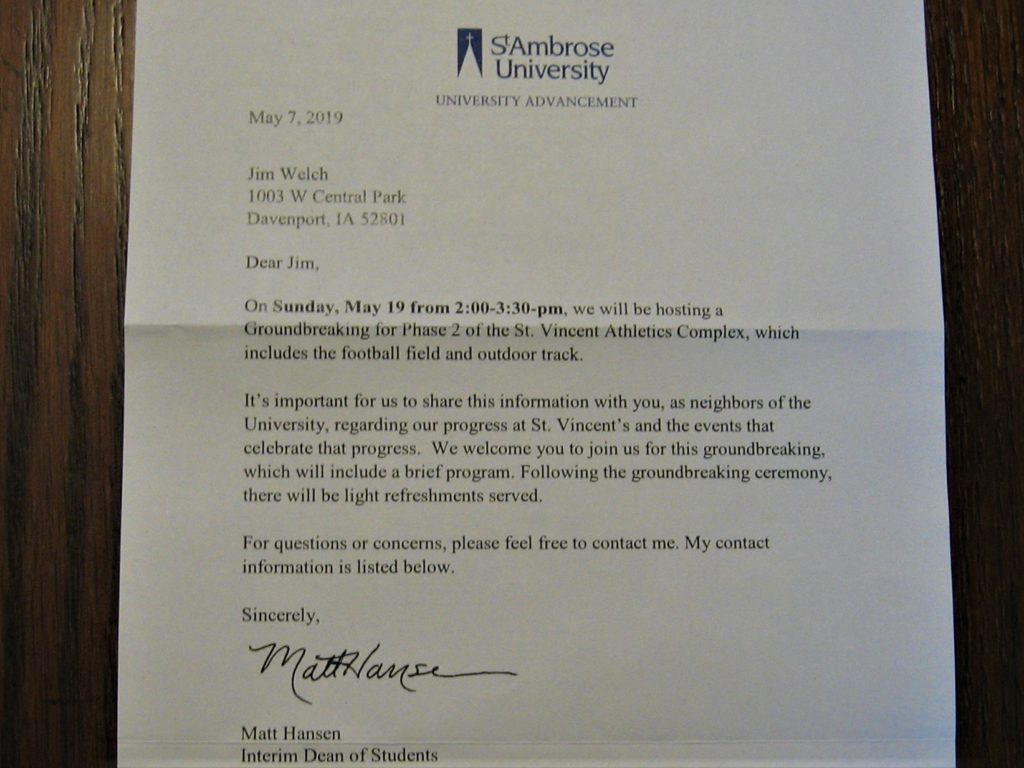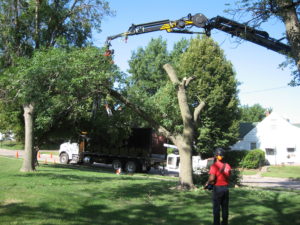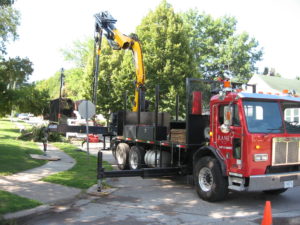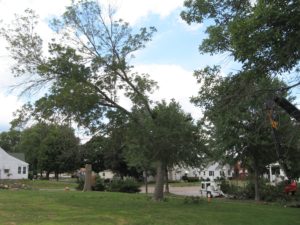
Also see previous post regarding Assumption High School announcement of the same facility?

Also see previous post regarding Assumption High School announcement of the same facility?
Bulbs planted in the fall provide the spring color that shouts new life!






 This past week WQAD interviewed Andy Craig, President of Assumption High School about further development of the Assumption property for athletics. The Channel 8 morning show, regularly interviews community leaders over breakfast and reveals developments that may not appear on the front pages. While Craig fell short of announcing a football stadium for the property soon, a phase II facility seems a go for the fall of 2021 with the help of St Ambrose University. Assumption has plans to install a full feature track, 500 seat bleachers, additional parking lot and a bridge across the unnamed creek that leads from Warren street intersection with Central Park, northward to Duck Creek. St. Ambrose when they owned the property ran afoul of IDNR regulations in an effort to cross this creek with a crossing. Assumption should learn from that experience for this project. More information may be found at WQAD.com.
This past week WQAD interviewed Andy Craig, President of Assumption High School about further development of the Assumption property for athletics. The Channel 8 morning show, regularly interviews community leaders over breakfast and reveals developments that may not appear on the front pages. While Craig fell short of announcing a football stadium for the property soon, a phase II facility seems a go for the fall of 2021 with the help of St Ambrose University. Assumption has plans to install a full feature track, 500 seat bleachers, additional parking lot and a bridge across the unnamed creek that leads from Warren street intersection with Central Park, northward to Duck Creek. St. Ambrose when they owned the property ran afoul of IDNR regulations in an effort to cross this creek with a crossing. Assumption should learn from that experience for this project. More information may be found at WQAD.com.

On Monday evening, January 14 Glen Armil Neighborhood Association held a meeting primarily to elect officers for the 2019- 2020 terms. Despite a cold and snowy evening, a number of residents turned out to vote on officers and to hear an update from SAU about renovations to McMullen Hall. Other information about SAU in addition to the McMullen Hall project are available at http://sau.edu/neighborhood-relations.
Also presenting was GANA resident Mitch Tollerud on technology and security devices. A lively discussion about security devices followed.
Elected as new officers / directors:
Bob Bohannon 2300 block of Armil PL., Vice President
Donna Clark 2403 Myrtle St., Secretary
Bruce Hass 600 block W. Rusholme St., Director at Large
Serving previously and re elected were:
Nancy Gentry 2323 Armil PL, President
Gary Nolan 2323 Armil PL, Treasurer
Jacquie Anderson 2400 block of Lillie, Director at large
Jim Welch 1000 block of W Central Park Ave, Director at large
Mr. Nolan submitted a treasurer report for GANA as of the end of 2018 showing a balance of $839.00
Mowing the grass on steep grassy areas of your lawn can be a challenge. So as I passed the 70 milestone I looked for a safer way to keep my lawn looking good without endangering my self mowing on steep slopes. Here is my solution to the steep part of my front lawn. The work was done by my son Tim who has many years of landscape experience.
The cost of materials was about $1500- $1700. Labor would be extra. Construction lasted four months because the time spent on the project was subject to weather and full time employment. Probably we averaged four or five man-hours a week over 14 weeks. We used hand tools except a grinder to cut rebar, a 1/2 ” drill to bore holes for the rebar, a Mantis tiller, and an electric chain saw to cut timbers.

Originally we thought it would be just two tiers high but a third tier was necessary. Luckily I had ordered two extra 10′ timbers.
Some hostas were reused from other areas of the yard, but Astibi, and Corabel and an Oak Leafed Hydrangea were purchased from nurseries. Two other planting areas in the yard were eliminated and returned to grass this fall. The last area with the Glen Armil yard sign will be the last bed to be relocated. This will return most of the lawn to grass out front.
On Friday morning, July 27th, I heard the sound of a wood chipper in my neighborhood and I thought of the Ash trees in Glen Armil Park. I wandered over to the park for a visit and sure enough, the Ash trees were under attack by a marvel of modern technology. Rainey Tree Service of Moline has been hired by Davenport to aid in the removal of Ash trees on public property. Nine trees in our park were marked for removal back in March (See story earlier on this site.) Back in the spring the city removed one of the nine infected trees but left the majority standing. “For safety reasons,” the Rainey employee said, “we are removing all of the marked trees in the park.”

The operator stays on the ground with a radio remote controls the boom and compound saw and grapple.
The new boom truck of Rainey Tree Service allows a 2 man crew to do the work of several more employees and easily remove five trees in one day. No one climbs into the trees and the long reach of the boom allowed the truck to do the heavy lifting. Some of the limbs the boom had a hold of must have weighed several hundred pounds. The boom manipulated the limbs handily to a point right in front of the chipper. By repositioning the boom the operator was able to push the limb right into the chipper.

The fourth tree is being cut down while the trunk of the second tree still stands near the corner. There is a boom on the large white truck that can pick up the logs from the trunk. After chipping three trees, the white truck was full of chips and logs, so it left to dump its load. Meanwhile the operator continued to stack limbs in front of the chipper in a long que.
Like so many men my age, I delivered newspapers as a way of earning money (and secondarily learning responsibility). Back in the late 1950’s boys were the preferred labor pool tapped to bring news to the living rooms of most of America. For about $1.90 a month I would deliver the San Antonio Light seven days a week, to about 100 customers in my neighborhood of San Antonio, Texas. Today, I pay about 20 times that amount for only 5 papers a week and I have had terrible customer service including inconsistent delivery. But, to be honest the newspaper industry is dying and finds it difficult to compete with the other sources of news via smart phones, TV, cable, internet, and social media.
Why did the model of hiring young boys to deliver papers work when I was growing up? Because the family encouraged teens to go out and earn some money, and child labor laws exempted newspaper delivery as a job that boys of a certain age could compete in the labor market. Boys were motivated to earn spending money, and were trainable for a simple job like delivering newspapers, and finally it was comparatively safe. It was safer than working in a garment sweatshop, but the delivery boy had to ride a bike in traffic to cover his route in a timely way. Most carriers were boys and used bicycles to deliver the papers. But a large number of children in the fifties rode bikes to school and around the neighborhood already, before they delivered the newspaper.
Today teens are less interested in working than they are in playing video games, texting, and posting on social media. Teens are less active physically, and so are less interested in carrying 30 pounds of newspapers around their neck and riding a bicycle up a hilly street. But this is an oversimplification. Because, today it is not as safe for young people to be on the street early in the morning by themselves. It may have started with famous disappearance case of Johnny Gosh the morning of September 5, 1982. Johnny disappeared on the morning of September 15, 1982, while delivering newspapers in West Des Moines. Two years later another boy went missing in the Des Moines area on August 12, 1984. Eugene Martin also disappeared while delivering newspapers. And in July, 1986, Jim Pollack, 15 fought off a wouldbe abductor while he was delivering newspapers on the west side of Des Moines. Noreen Gosh believes that all three of these incidents are related to child trafficking for sex.
These cases received wide notoriety and no doubt since the 1980’s parents have not seen delivering papers as a safe job for boys and girls. So today boys and girls don’t deliver many newspapers. So to attract older individuals, the newspaper has to pay more for the delivery of their product. This raises the cost of subscription for home delivery, but the marketplace is keen. Therefore when I encounter poor service and high costs, I will look elsewhere for my news. Will I be as happy getting my newspaper digitally? I don’t know, I struggle with the slow loading time and the size of the fonts on my computer monitor. The local newspaper covers local government and school district news a lot better than other sources though. Their reporters are more seasoned and more responsible in covering local issues than are other media. And I will miss the comics in my hands.
Warmer temperatures are making there way to the Glen Armil neighborhood as Spring officially arrived on Tuesday, March 20. Now all of the stuff left behind when the snow plows collected the things on the street marr the curb appeal of our homes. Alleys too need a cleaning and the city says homeowners are responsible for maintaining the alley from the adjoining edge of your property halfway into the middle. This neighborhood has always taken pride in the appearance of the streets and alleys, we should not let our standards slip. Leaves raked from the street or alley can be put in paper bags and set out for free pick up until April 18th for our neighborhood.
Eight large ash trees have been marked for cutting in Glen Armil Park. The week of March 4th saw eight large trees marked with a large X on their trunks and one tree was felled also last week. The rest of the trees will probably be cut down on Monday or Tuesday, the 12th or 13th. By the time you read this the trees will likely will be gone, leaving large open areas where the trees once stood.
The trees had been doomed for two seasons since the city had announced in 2016 that a large number of ash trees on city land had been infested with the larvae of the Emerald Ash Borer . There is no economical way of saving an ash tree that is infested. One specimen ash tree may be treated with costly chemicals in order to preserve it in Vander Veer Arboretum. All other ash trees on city land will probably be cut down and the infected wood properly disposed of. Replacement trees will likely be planted at a later date.